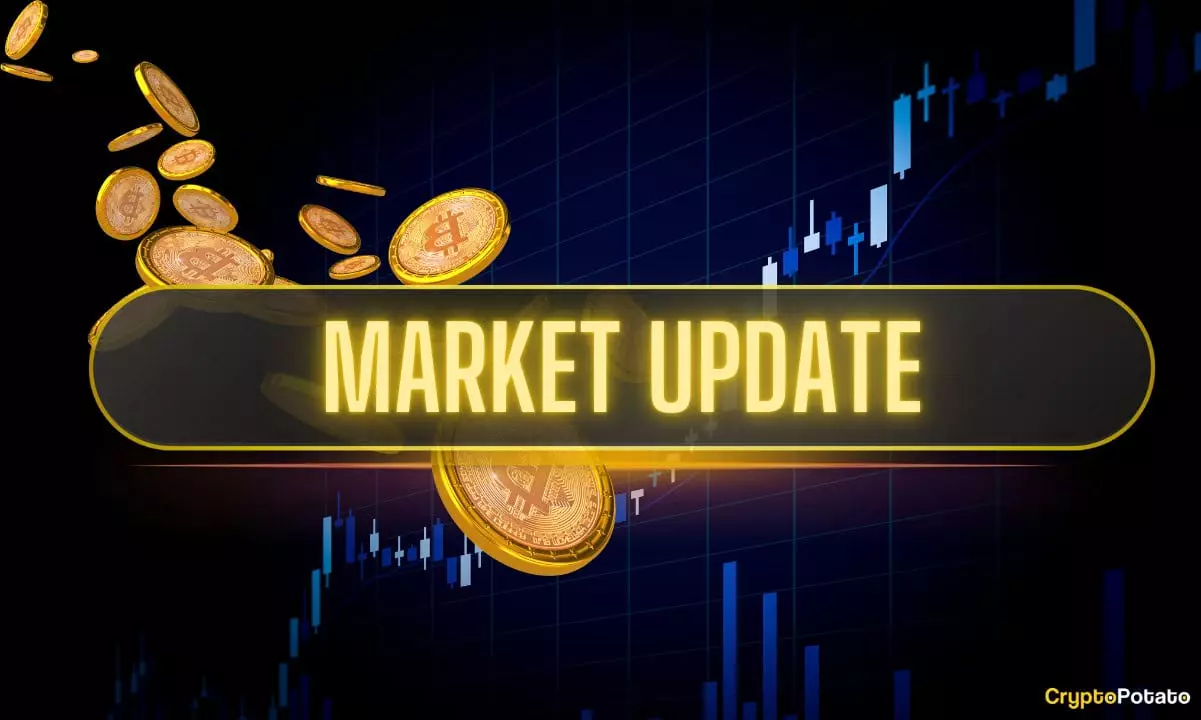The recent performance of Bitcoin signals more than mere market fluctuation — it reflects a broader, underlying conviction that digital assets are poised for sustained growth. After a tumultuous stretch where prices hovered below $117,000, Bitcoin rebounded convincingly, making bold advances towards $124,500 before a correction set in. This pattern reveals an accelerating trajectory driven by investor optimism, not just speculation.
Contrary to alarmist narratives suggesting that Bitcoin is nearing a peak, its ability to recover swiftly from sharp corrections underscores a resilient market that’s largely unshaken by short-term setbacks. Indeed, during the week, despite a significant reaction to inflation data and geopolitical tensions, Bitcoin reaffirmed its position as a store of value, more than just a speculative instrument. The rally beyond $123,200 is less about frenzy and more about institutional confidence and the slow maturation of crypto as a financial pillar.
The notion that such peaks mark the termination of a bull cycle is premature. Market cycles are not linear, and current volatility should be interpreted as a healthy sign of an asset breaking new ground. The correction following the peak is not an ominous sign of collapse, but rather a natural digestion of gains before further climbs. The key takeaway is that Bitcoin’s resilience demonstrates a market increasingly driven by macroeconomic factors and institutional acceptance, rather than naive retail optimism.
Altcoins: From Promising to Overhyped?
Ethereum’s push beyond $4,700, nearing its 2021 highs, exemplifies the broader enthusiasm for altcoins, which are often overshadowed by Bitcoin’s dominance. While some skeptics argue that Ethereum’s limited advance towards its near-$4,900 all-time high signals overextension, it’s important to recognize how these levels are a reflection of growing institutional interest and technological upgrades.
Other altcoins like BNB, compared through recent records at $865, suggest a maturation process. The rise of SOL, ADA, and LINK points to a blossoming ecosystem where diverse projects attract investment, gradually challenging Bitcoin’s hegemony. This trend indicates the beginning of a broader “altseason,” where investors diversify their holdings, motivated by the potential for higher returns and innovation within these ecosystems.
While some critics worry that the altcoin surge is a bubble, it’s worth considering that such growth often foreshadows a deeper integration of crypto into mainstream finance. The decline in Bitcoin’s dominance from over 62% to below 58% reflects this shift — a market evolving from simple speculation towards a multi-layered financial architecture with varied opportunities for investors.
Strategic Accumulation and Market Sentiment
Major players have adopted a strategic approach, quietly accumulating Bitcoin while markets fluctuate wildly. High-profile purchases, like Saylor’s modest buy of 155 BTC for $18 million and Metaplanet’s larger buy of 518 BTC for over $61 million, highlight a shift towards confidence in the long-term prospects of Bitcoin.
Interestingly, the decline in Bitcoin’s dominance suggests a more sophisticated investor base that values diversification. As altcoins gain traction, institutional buyers recognize the importance of a balanced portfolio to hedge against Bitcoin’s inherent volatility. This nuanced stance, favoring measured accumulation rather than speculative exuberance, is why the recent dips might be viewed not as signs of weakness but as opportunities for strategic investments.
Moreover, the recent sale of Deribit by Coinbase signifies a maturing market where consolidation and strategic positioning are becoming the norm. As derivatives trading expands, it signals a maturing asset class that is attracting both retail and institutional interest, reinforcing the idea that the crypto market is heading toward a more stable and integrated future.
The Regulatory and Geopolitical Landscape: Challenges or Catalysts?
The week’s geopolitical developments, such as Donald Trump’s meeting with Vladimir Putin, inject a dose of uncertainty into markets. However, rather than undermining confidence, such events often serve as catalysts for mainstream adoption, forcing policymakers and investors to confront the realities of digital assets.
While some see regulatory uncertainty as a threat, it can also be viewed as a necessary step towards legitimizing crypto as a recognized asset class. The emergence of large-scale institutional interest, coupled with clear regulatory frameworks, can reduce volatility and foster sustainable growth.
Furthermore, high-profile legal outcomes, such as Do Kwon’s guilty plea regarding Terraform Labs’ collapse, highlight a maturation phase where the industry begins to shed its shady reputation. These incidents, instead of deterring investors, encourage greater accountability and transparency, paving the way for more robust infrastructure and trust.
The Path Forward: Why Caution Should Not Turn Into Fear
In light of recent price swings, many analysts prematurely suggest that Bitcoin’s bullish cycle might be nearing its peak. However, an in-depth look at market fundamentals suggests otherwise. The Bitcoin NUPL metric, which assesses investor profit and loss, points to a market still firmly in bullish territory, with room for further expansion.
The demand for Ethereum’s staking services, which have seen a backlog of over 800,000 ETH valued at $3.7 billion, underscores ongoing confidence in network upgrades and scalability solutions. The expansion of derivative markets, evidenced by Coinbase’s acquisition of Deribit, indicates an increasingly sophisticated ecosystem that is capable of absorbing shocks without derailing the entire market.
Ultimately, fears about an imminent crash ignore the broader context: a globally interconnected financial system increasingly integrating crypto. The current volatility is not the sign of an overheated market but the sign of a vibrant, transitioning industry that is learning to navigate macroeconomic shocks, geopolitical tensions, and technological complexities. The ongoing confidence from institutional players and the steady inflow of capital suggest that, far from peaking, the crypto’s ascent has much further to go.

